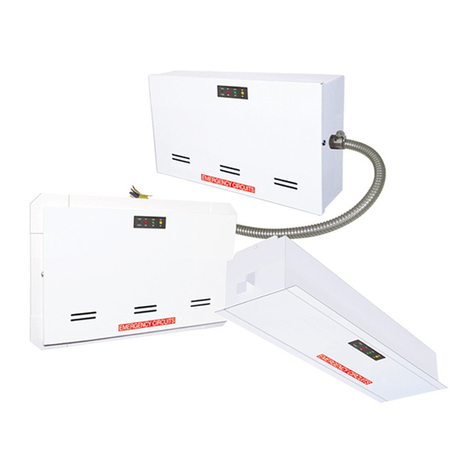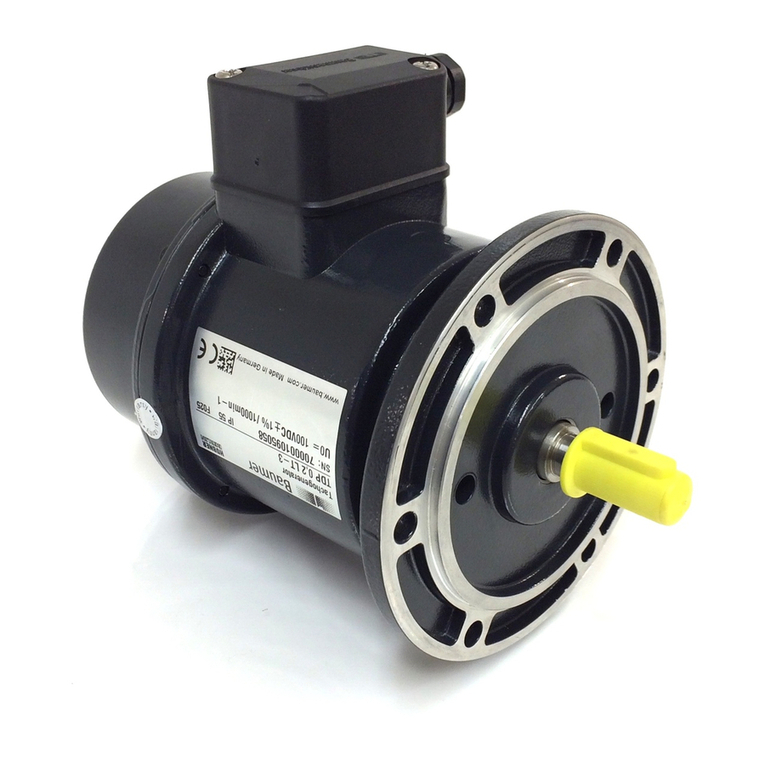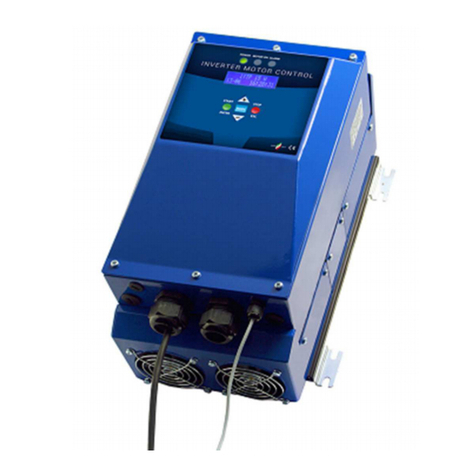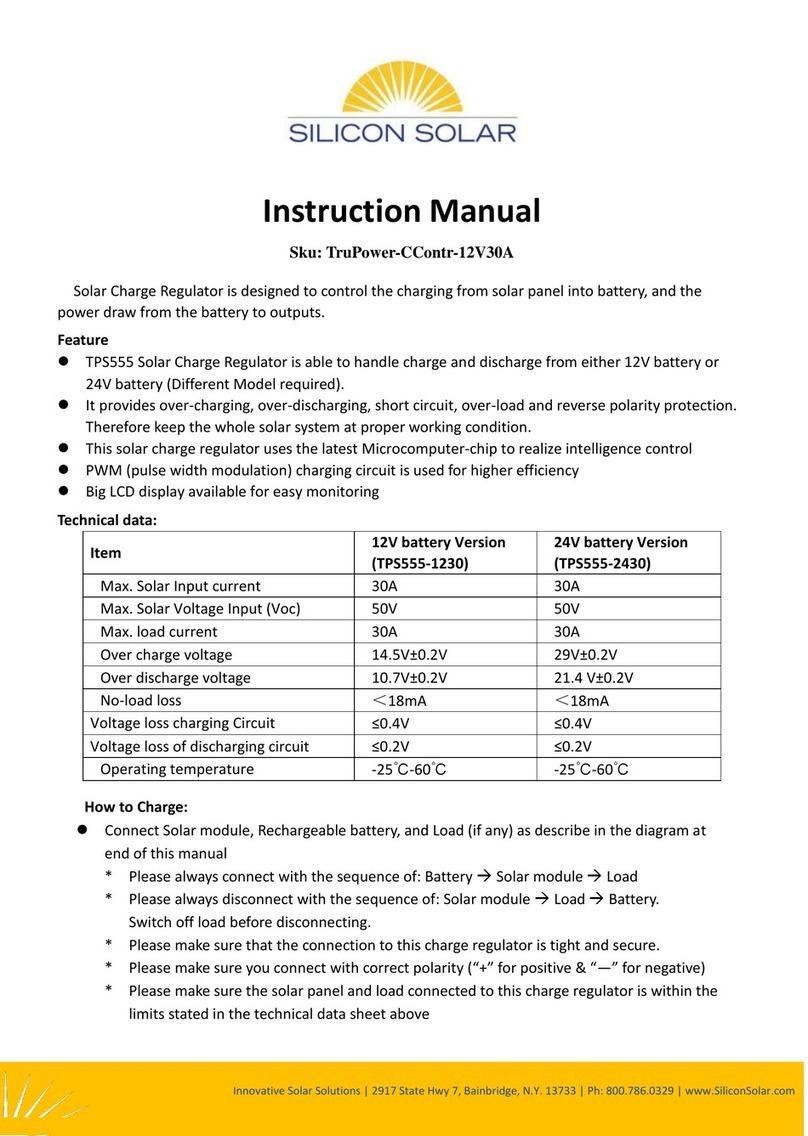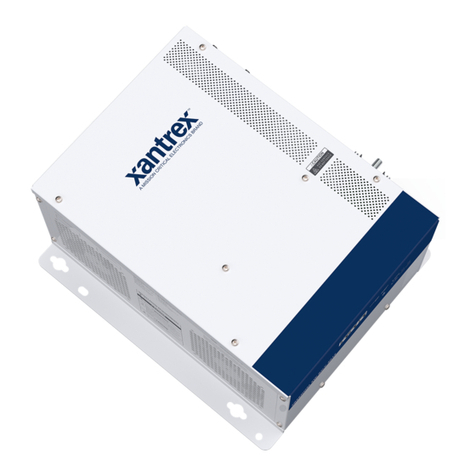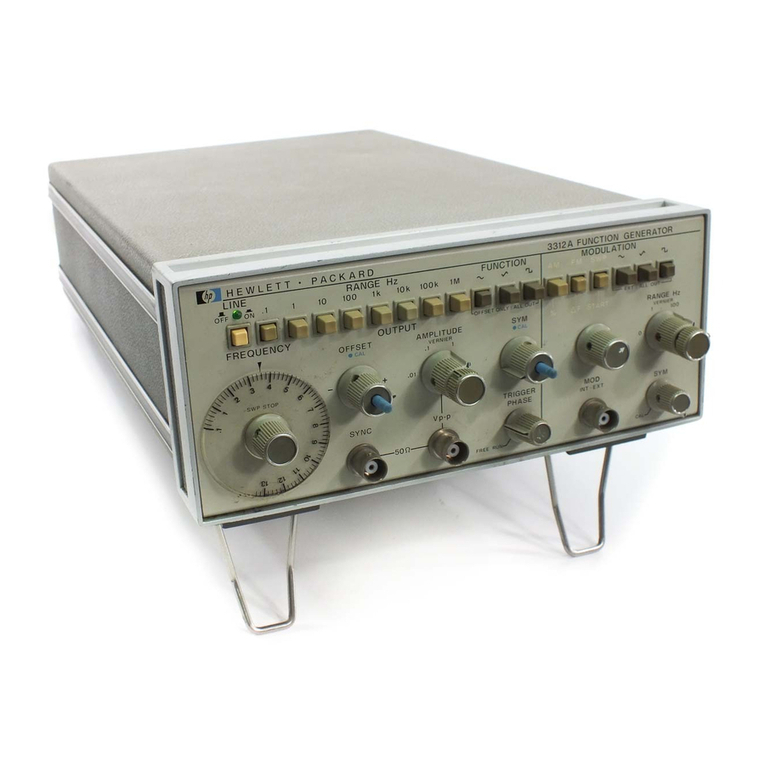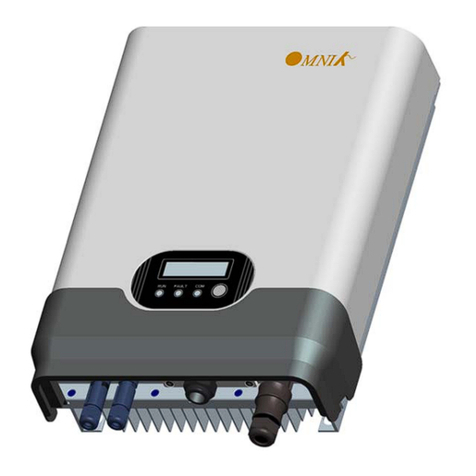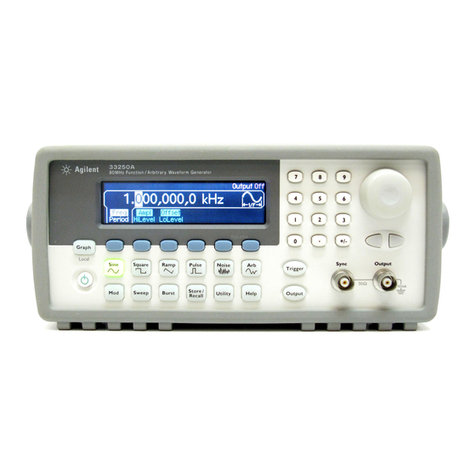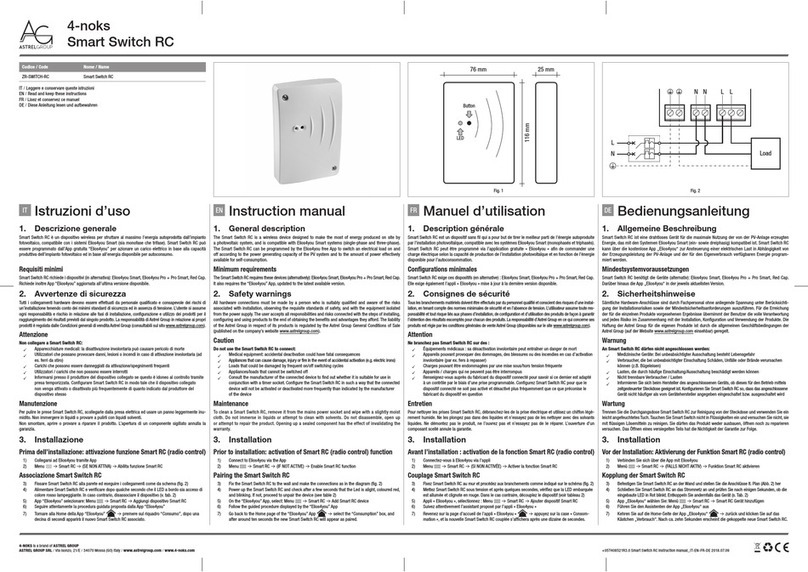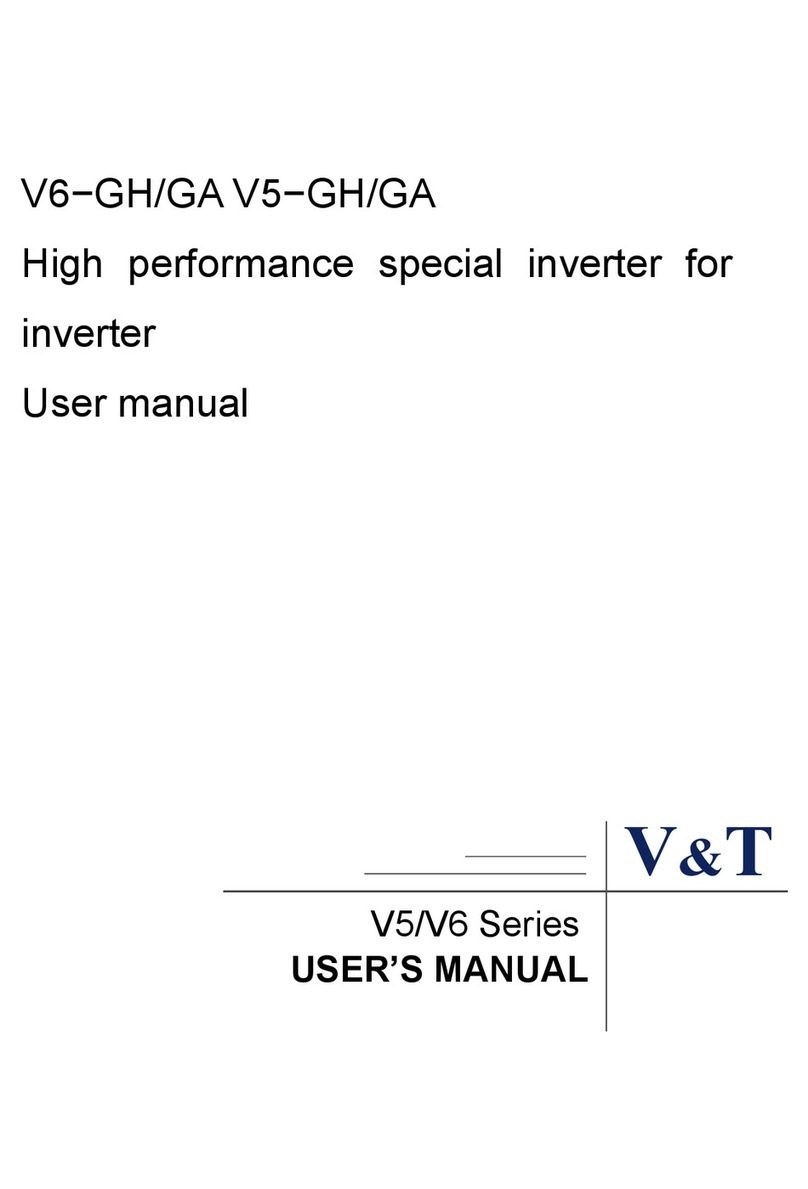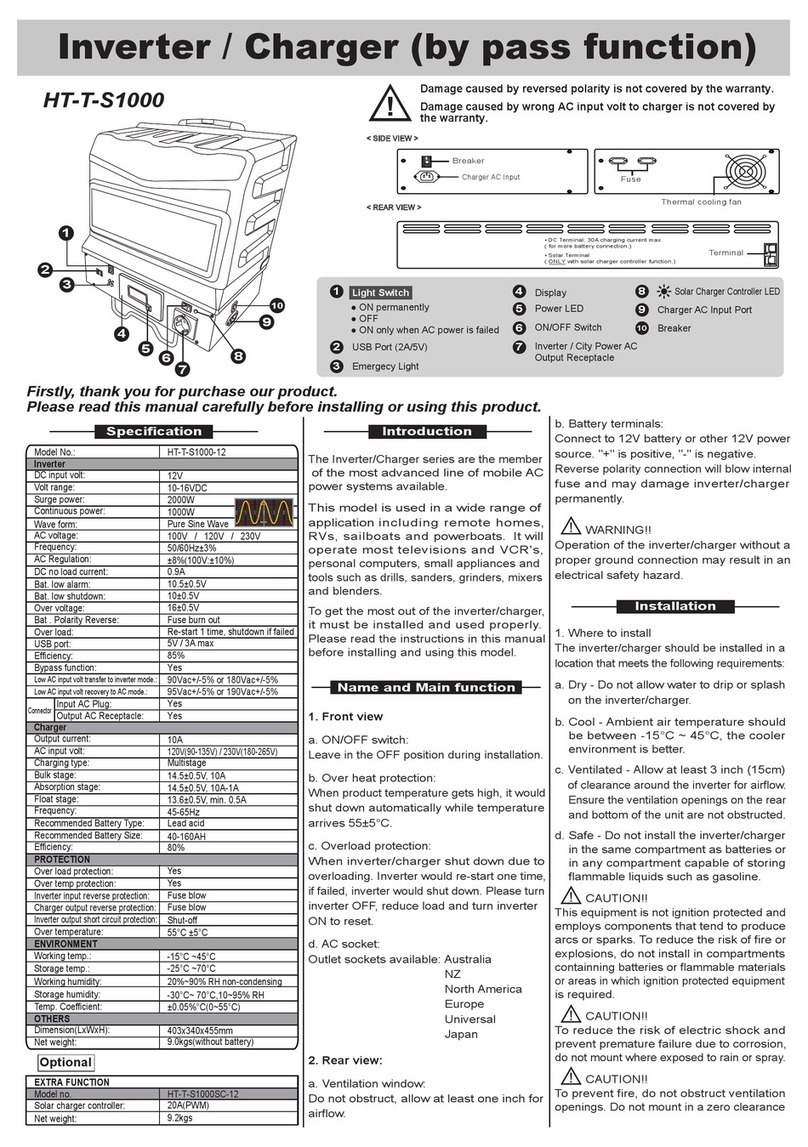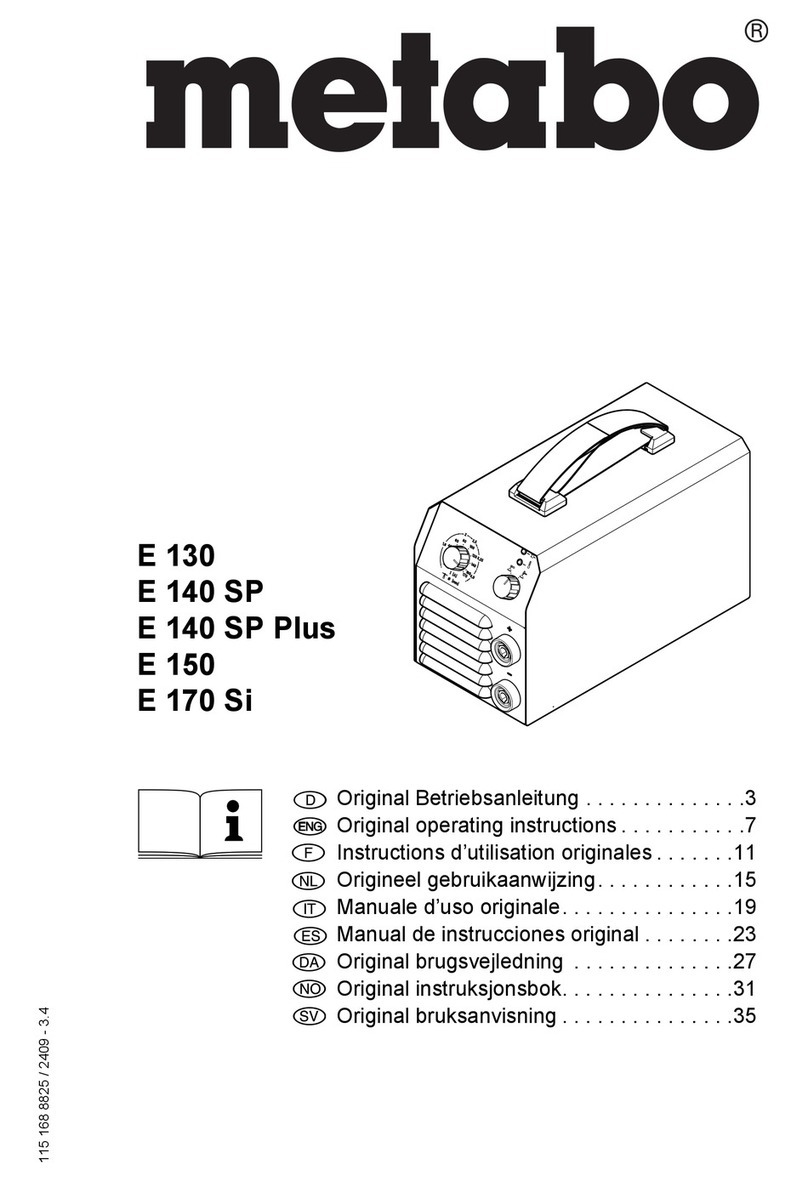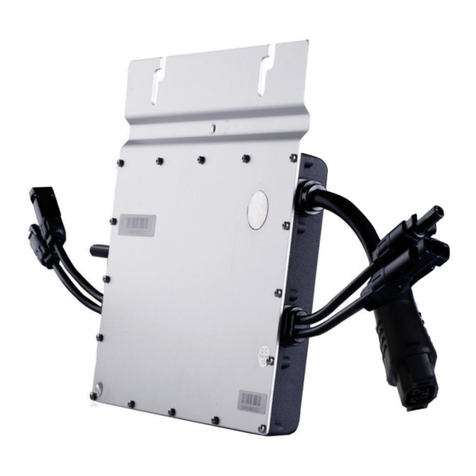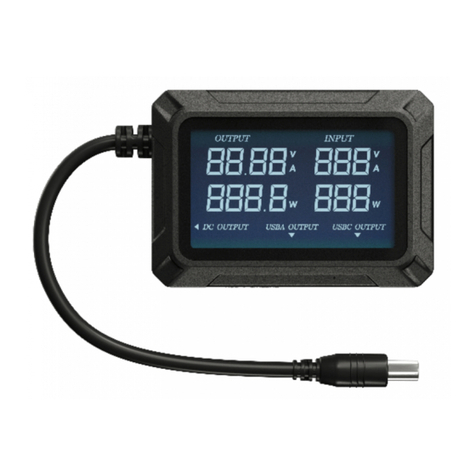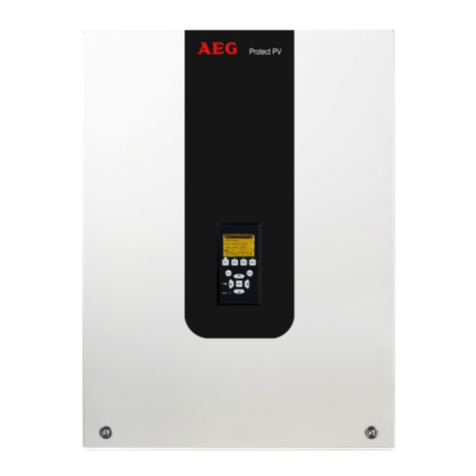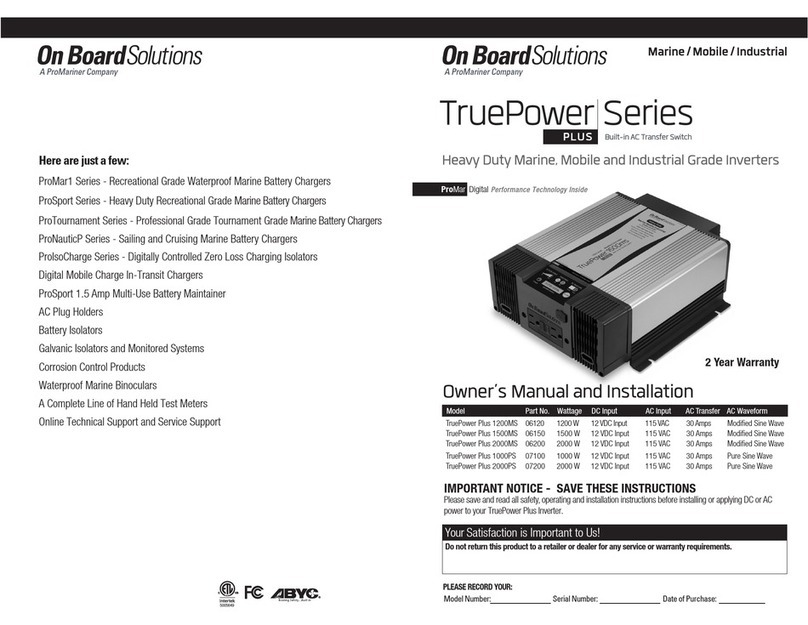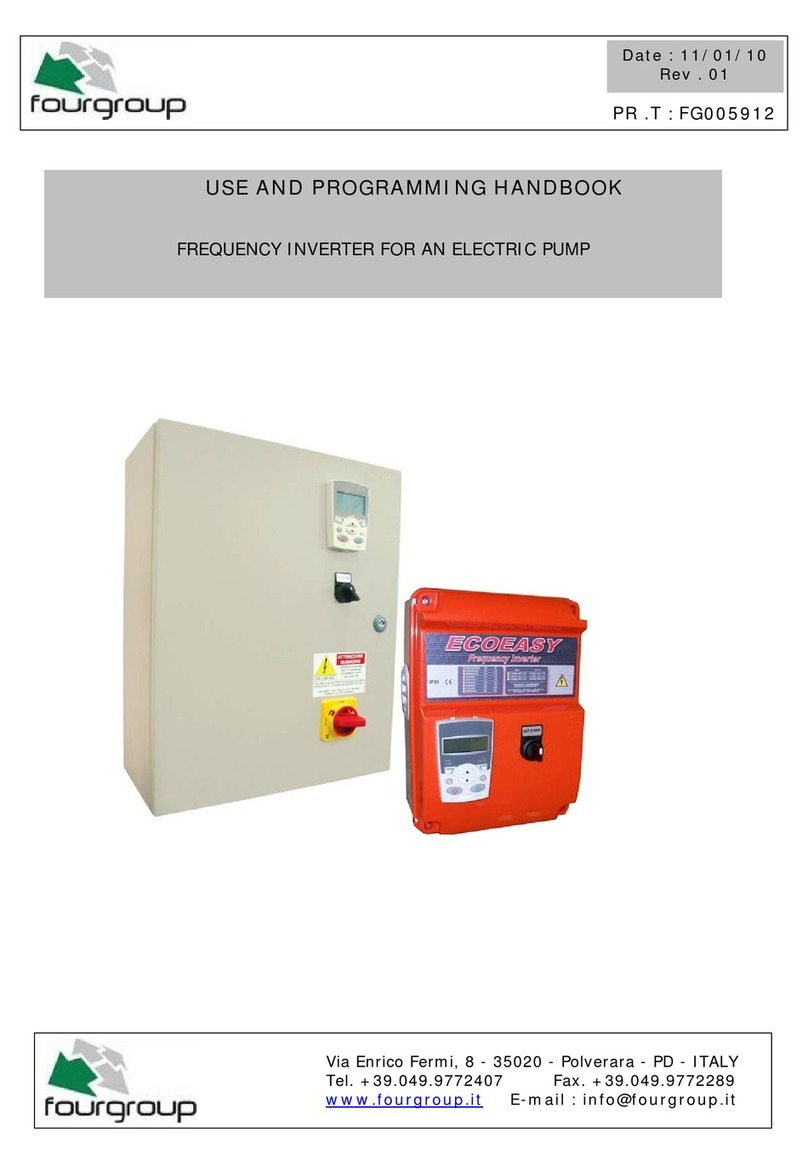5
USER’S MANUAL 700, 1000, 1500 WATT INVERTER ENGLISH
COMMISSIONING AFTER INSTALLATION
1. Check the polarity of the DC-connections. Do not
place the DC fuse if the polarity is not correct.
2. Place a DC-fuse (see SPECIFICATIONS) in the fuse
holder. When placing this fuse, a spark may occur,
caused by internal capacitors of the Inverter. This is
normal.
3. AC voltage: the load can be plugged into the AC-
output (Figure 1, ref. 2) directly.
OPERATION
Switching on:
Move the main switch (Figure 1, ref. 1) to “ON”. The
Inverter will start a self-test indicated by two beeps from
the buzzer and flashing LED indicators. This may last for
approximate two seconds. Finally the buzzer will produce
another beep and the Inverter will switch on, indicated by
two green LED indicators.. Now the Inverter is ready to
supply load connected to the AC-output.
Switching off:
Move the main switch (Figure 1, ref. 1) to the “OFF”
position. Note that switching off the Inverter does not
break the connection to the batteries!
Remote operation:
The Inverter can be operated on a remote location by
means of an optional remote switch. Move the main
switch (Figure 1, ref. 1) to the “REMOTE” position. When
the remote contact is closed, the Inverter is switched on.
GFCI (120V models only):
In case of a ground fault, the Ground-Fault Circuit
Interrupter (GFCI) trips and cuts off the AC output. To
switch on the AC output again, push the reset button
(Figure 1, ref. R)
LED indicators
See Figure 1. The operation of the inverter is made
visible by means of LED indicators (3), (4) and (5).
“INPUT LEVEL” (ref. 3) displays the input voltage of the
inverter:
Input voltage (V)
Indication of the LED 12V models 24V models
RED blinking slow 10.3~10.6 20.5~21.2
RED 10.6~11.0 21.2~21.8
ORANGE 11.0~12.1 21.8~24.1
GREEN 12.1~14.2 24.1~28.6
ORANGE blinking 14.2~15.0 28.6~30.0
RED blinking fast > 15.0 > 30.0
“LOAD LEVEL” (ref. 4) shows the output load level:
LED
indication Power level (W)
Model 700W 1000W 1500W
LED off 0-56 0-80 0-120
GREEN 56-230 80-330 120-495
ORANGE 230-525 330-750 495-1125
RED 525-672 750-960 1125-1450
RED blinking >672 >960 >1450
“STATUS” (ref. 5) shows the operation mode of the
inverter. As long this LED isn’t illuminated red, no failure
is detected: the inverter is operating normally.
If an error occurs, it is detected by the apparatus itself:
the “STATUS” LED turns red.
Indication of the LED Meaning
▬▬▬▬▬▬▬▬▬▬▬
GREEN, uninterrupted Power OK
▬▬▬▬
GREEN, slow blinking
Power saving mode, see
DIP SWITCH SETTINGS
▬▬▬▬▬▬▬
RED, fast blinking DC-input voltage too high
▬▬▬▬
RED, slow blinking DC-input voltage too low
- - - - - - - - - -
RED, intermittently blinking
Internal temperature too
high
▬▬▬▬▬▬▬▬▬▬▬
RED, uninterrupted Overload / short circuit
Maintenance
No specific maintenance is required. If necessary, use a
soft clean cloth to clean the Inverter. Never use any
liquids, acids and/or scourers.
Check the wiring on a regular base. Defects such as
loose connections, burnt wiring etc. must be corrected
immediately.
DECOMMISSIONING
Proceed as follows for decommissioning of the inverter:
1. Move the main switch (Figure 1, ref. 1) to the OFF
position.
2. Remove the DC fuse. Be sure that others can not
reverse this action taken.
3. Now the inverter can be demounted in a safe way.
